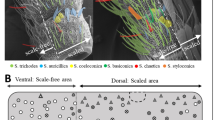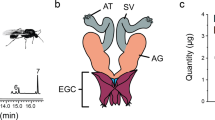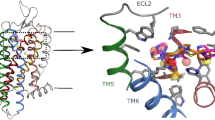Abstract
THE alarm pheromones of certain species of ant provide extraordinarily favourable tools with which to examine the relationships between molecular characteristics and biological activity.
This is a preview of subscription content, access via your institution
Access options
Subscribe to this journal
Receive 51 print issues and online access
$199.00 per year
only $3.90 per issue
Buy this article
- Purchase on SpringerLink
- Instant access to full article PDF
Prices may be subject to local taxes which are calculated during checkout
Similar content being viewed by others
References
Blum, M. S., Warter, S. L., Monroe, R. S., and Chidester, J. C., J. Insect Physiol., 9, 881 (1963).
Blum, M. S., and Warter, S. L., Ann. Ent. Soc. Amer., 59, 774 (1966).
Amoore, J. E., Palmieri, G., Wanke, E., and Blum, M. S., Science, 165, 1266 (1969).
Wright, R. H., The Science of Smell (Allen and Unwin, London, 1964).
Wright, R. H., Israel J. Entomol., 4, 83 (1969).
Wright, R. H., Chambers, D. L., and Keiser, I., Canad. Entomol., 103, 627 (1971).
Wright, R. H., J. App. Chem. Biotechnol., 21, 10 (1971).
Author information
Authors and Affiliations
Rights and permissions
About this article
Cite this article
WRIGHT, R., BRAND, J. Correlation of Ant Alarm Pheromone Activity with Molecular Vibration. Nature 239, 225–226 (1972). https://doi.org/10.1038/239225a0
Received:
Revised:
Issue date:
DOI: https://doi.org/10.1038/239225a0
This article is cited by
-
Conservation of repeated DNA base sequences in theCrustacea: A molecular approach to decapod phylogeny
Journal of Molecular Evolution (1976)
-
The response of the honeybee antennal CO2-receptors to N2O and Xe
Journal of Comparative Physiology (1973)



